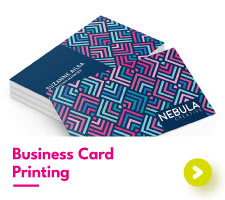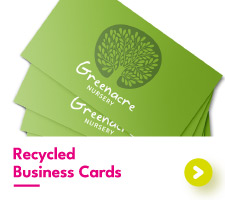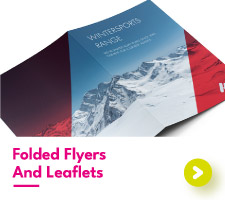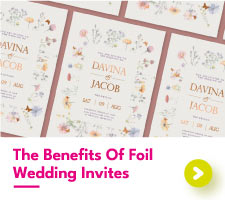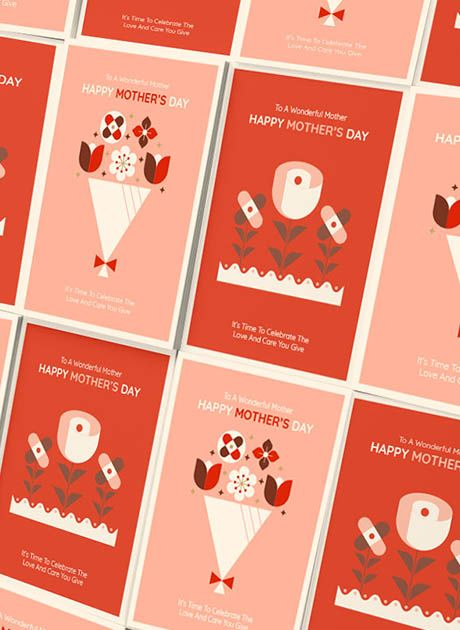What is GSM in Paper? Everything You Need to Know
If you’ve ever heard the term GSM in relation to paper and wondered what exactly it means, you’re not alone. Paper GSM meaning – grams per square metre – is an essential concept in the world of printing and understanding it can make a world of difference to the quality of your projects. Whether you’re designing custom business cards, personalised business flyers, or premium wedding invitations, choosing the right GSM is key to achieving the look and feel you’ve been dreaming of.
But what does GSM for paper mean? Simply put, GSM measures the weight of a one-square-metre sheet of paper in grams. The higher the GSM, the heavier – and usually thicker – the paper. For example, 80 GSM printer paper feels lightweight and flexible, while 400 GSM card stock is sturdy and robust. While GSM isn’t a direct measurement of paper thickness, it often correlates; higher GSM papers tend to feel denser in hand, giving products like premium flyers with rounded corners that luxury feel you've been looking for.
Choosing the right GSM for your needs involves more than just picking something that “feels right” – it’s about creating a product that aligns with your brand and purpose. Whether you’re after lightweight paper for everyday flyer printing or luxurious, thick stock for premium bookmark printing projects, understanding the basics of paper weight in GSM will help you make an informed choice.
In this guide, we’ll explore the ins and outs of GSM in paper meaning, its impact on your designs, and how to choose the perfect paper for your next project. By the end, you’ll know exactly what GSM is and why it matters, especially when it comes to creating products that stand ahead of the rest.
Let’s dive into the details and demystify the world of GSM in paper.
Why Do Papers with the Same GSM Have Different Thicknesses?
It’s easy to assume that two papers with the same GSM would have identical thicknesses, but that’s not the case. GSM – grams per square metre – measures weight, not thickness. Paper thickness is influenced by its composition, texture, and properties.
Some papers are more compact, while others have air pockets that make them thicker without increasing their weight. For instance, textured or recycled papers often feel bulkier than silk or gloss papers, even if the GSM is exactly the same. This variance can be subtle, but it’s crucial if your print needs to fit specific envelopes or product packaging.
- Silk Paper: Compact and smooth, silk paper is fractionally thinner despite its weight.
- Uncoated Paper: Air pockets give this stock a thicker feel and a textured finish.
- Recycled Paper: Often bulkier due to its fibres, speckles, and air pockets.
- Gloss Paper: Compact like silk, gloss paper tends to be thinner but boasts a reflective finish.
These distinctions between gloss, silk, and uncoated stock underline why GSM alone doesn’t determine the thickness of paper.


GSM (Grams per Square Metre) is calculated by taking the total weight of a square metre sheet of paper stock
Measuring Paper Weight and Thickness
GSM isn’t the only way to evaluate paper weight and thickness. Two other widely used methods are:
1. Caliper Method: This approach measures paper thickness directly using a caliper (or micrometer). It provides a reading in increments of 1/1000 inch, often referred to as points (pt), particularly in the USA. For instance, paper measuring 0.008” is classified as 8-point paper. This method is ideal for precise measurements when exact thickness matters, such as for packaging inserts or custom-made playing cards.
2. Basis Weight (U.S. System): Primarily used in the United States, basis weight measures the weight of 500 uncut sheets of paper in their standard size. This can vary depending on:
Bond/Copy Paper: Basis sheet size is 17x22”
Cover/Cardstock: Basis sheet size is 20x26”
Index Stock: Basis sheet size is 25.5x30.5”
Text/Book Paper: Basis sheet is 25x38”
For example, 80-pound cover stock is thicker than 80-pound bond paper because of differences in their standard sheet size and intended uses.
GSM vs Paper Thickness: What’s the Takeaway?
While GSM tells you the weight of the paper, thickness depends on its material properties. This distinction is important when choosing the right paper for your needs – whether you’re printing luxury invitations on textured card or sleek printed brochures on silk stock.
Understanding how GSM and thickness interact ensures your projects not only look great but also meet practical requirements like fitting snugly into an envelope or achieving a premium feel.
Why Does Paper Weight Matter?
Choosing the right paper weight GSM is about more than just aesthetics – it directly influences the durability, perception, and overall appearance of your printed materials. Whether you’re choosing the right paper for your printed business cards, custom greeting cards, or invitations, weight plays a pivotal role in ensuring the quality and impact of your project.


1.Durability: Strength that Lasts
Paper with a higher GSM value is normally more durable. Thicker paper withstands wear and tear better, making it ideal for materials that will be handled frequently or exposed to the elements.
For example, a business card printed on 250 GSM paper might start creasing after being shuffled around a few times in a wallet. On the other hand, a sturdier 400 GSM card can hold its shape and maintain a polished look for far longer. This durability ensures your materials last as long as you need them to.


2.Perception: Because First Impressions Count
Paper weight doesn’t just impact how something feels – it shapes the way it’s perceived. A flyer printed on lightweight paper might be functional, but it can feel flimsy and less professional. On the flip side, a heavier stock suggests quality, attention to detail, and a premium brand experience.
Think of it this way: receiving a thick, textured invitation feels more luxurious and special compared to a lightweight leaflet. When you’re printing something as personal as business cards or birthday invitations, the right paper GSM can make all the difference in how you’re remembered.


3. Appearance: More Than Meets the Eye
The visual appeal of your prints is enhanced by choosing the right paper weight. Heavier papers don’t crease or curl easily, maintaining their polished look over time. This is especially important for materials like bookmarks or greeting cards that are often displayed or kept for long periods.
Moreover, the weight of the paper impacts how colours and finishes are perceived. Vibrant designs printed on heavier, high-quality GSM paper appear more professional and striking than those printed on lighter stocks.


4. Versatility: Finding the Right Balance
While heavier papers offer durability and luxury, lighter options have their own advantages. Flyers, printed posters, and disposable materials often benefit from a lighter GSM paper, making them easier to handle and distribute in bulk.
Choosing the correct paperweight GSM ensures your project balances functionality with appearance.
The Role of Paper Weight in Your Print’s Success
The GSM of paper isn’t just a number – it’s a measurement of how your printed materials will look, feel, and perform. By carefully selecting the right paper weight, you ensure your prints serve their intended purpose, stay durable over time, and take your brand perception to brand-new heights. From crisp foiled business cards to luxury wedding stationery, the right paperweight can transform the ordinary into the extraordinary.
GSM Paper Guide
There’s plenty to consider when choosing a GSM paper value in print. The product you want to print will be the main factor that influences your choice. Does your print need to fold? Do you want a laminate? Is your annual company meeting on the horizon and you need to impress your boss with some fancy foiled brochures?
Instead of attempting to guess which GSM for paper is the best choice, we’ve got a handy paper thickness GSM chart for you to refer to.
| GSM Thickness Guide | Can it be laminated? | Can it be folded? | Can it be foiled? | Can it be reprinted? | We think it's best for |
|---|---|---|---|---|---|
| 100-120 GSM | No | Yes | No | Yes | Letterheads |
| 150 GSM | No | Yes | No | Yes | Flyers |
| 170 GSM | No | Yes | No | Yes | Posters |
| 200 GSM | No | Yes | No | No | Folded Flyers |
| 250 GSM | Yes | Yes (One Fold Only) | Yes | No | Certificates |
| 300-350 GSM | Yes | Yes (One Fold Only) | Yes | No | Just About Anything! |
| 400 GSM | Yes | Yes (One Fold Only) | Yes | No | Art Prints |
| 540-700 GSM | Yes (Recommended) | No | Yes | No | Business Cards |
| 800 GSM | Yes (Recommended) | No | Yes | No | Business Cards |
But which should you choose and why?


100gsm and 120gsm
100 & 120gsm are the lightest paperweights available to print here at Aura Print. Being so light, these stocks are incredibly thin, making them perfect for custom-branded letterheads that require home printing. The ability to be reprinted multiple times also makes this weight class our #1 choice for compliment slip printing.


150gsm
Another lightweight stock, 150gsm is perfect for large disposable print-runs of flyers or single-use menus. Although you may have to sacrifice some of our finer finishes with 150gsm, they’re ideal for purpose-serving print that doesn’t need to be dressed up to make a statement.


170gsm
The industry standard for poster prints, this paperweight provides enough strength to keep posters tear-free and looking awesome on walls while being lightweight enough to be rolled or folded. It’s also a great option for flyers with a slightly more premium feel!


200gsm
Rounding off the ‘lightweight’ class, we have 200gsm! Available in a range of paper types, 200gsm stock can be folded more than once all while keeping it’s cool. From half-folds to tri-folds or even gate-folds, if folded flyer prints are what you’re looking for, 200gsm is what you’ll need!


250gsm
With the ability to be laminated and foiled, 250gsm is your gateway into premium stocks with innovative finishing options. From laminates to metallic foils, 250gsm stock can be customised however you see fit while remaining lightweight enough to keep your prints from being too bulky.


300gsm and 350gsm
A jack of all trades in the world of print, 300 & 350gsm stock is available in most of our paper types and is perfect for everything from metallic foil playing cards to bookmarks adorned with foil, brochures, and custom-printed menus. This midweight cardstock can be laminated, foiled, folded, perforated, drilled, and more, so if you’re unsure which paperweight to choose, 300/350gsm is always a safe choice!


400gsm
Otherwise known as business card GSM, 400gsm is the heaviest of all our single-thickness stocks and, you guessed it, is our top choice for soft-touch laminated business cards! Perfect for decorating with all the finest trimmings, if you want to avoid cheap-looking business cards, 400gsm is the stock for you!


540gsm, 600gsm, and 700gsm
Made by glueing two sheets of your chosen stock together, our double-thick stock options range in size depending on the heft you’re looking for! But the best thing about our double thick stocks? We can paint the edges of your business cards, tags, or bookmarks in a range of colours! Perfect for premium print like duplexed business cards, art prints, and wedding invites, if your designs will benefit from bulk, this is the stock range for you.


800gsm
Dwarfing all others beneath it, 800gsm colour core is a triple thick paper comprised of two layers of white paper (the bread) on the front and rear, sandwiching a funky strip of your favourite cardstock colour in the middle! Due to it’s hardiness, we recommend laminating 800gsm stock before we turn it into business cards with a coloured core, premium art prints, or whatever else you had in mind!
Understanding Microns (Mic) and How They Compare to GSM
When talking about paper thickness GSM and paper weight GSM, you might come across the term “Mic”, which refers to microns. A micron is a unit of measurement for paper thickness, where 1 micron equals 1/1000th of a millimeter. For example, 250 mic equals 0.25mm.
Mic vs GSM: What’s the Difference?
While GSM measures the weight of paper, microns gauge its thickness. However, the two are not always directly linked. Paper with the same GSM can have varying thicknesses in microns, depending on factors like the type of fibres used or manufacturing processes like calendaring, which compresses fibres to create denser, thinner sheets without affecting the weight.
For instance, a textured or air-filled paper may feel bulkier and have a higher micron measurement than a compact paper of the same GSM value. This difference matters in applications like packaging, where durability and strength are essential, or for premium items like business cards, where both weight and thickness contribute to the perception of quality.
By understanding both GSM and microns, you can make more informed decisions when selecting the right stock for your printing needs, whether it’s a lightweight, flexible sheet or a thick, durable card.


Is Lower Paper Weight GSM More Sustainable?
When it comes to sustainability, choosing paper with a lower GSM can certainly be a more eco-friendly option. Paper with a lower weight per square meter allows you to use less overall material, which means less wood, energy, and water required in production. This can contribute to a lower environmental footprint.
For example, using lighter-weight papers such as 70gsm or 75gsm can be both an economical and environmentally conscious choice. These lighter papers require less wood pulp, which in turn means fewer trees are cut down, and less waste is produced during the manufacturing process. Producing lower GSM paper also typically uses less energy and water compared to heavier paper options.
Opting for lower paper thickness GSM not only reduces the overall paper usage but also makes logistics more sustainable. Lighter boxes are easier to transport, meaning they require less fuel for shipping, and files and archives with lighter GSM paper are easier to manage.
However, it’s important to note that while lighter GSM paper may be more sustainable in terms of material use, higher GSM papers tend to be thicker and more durable, which might be a better option for certain projects that require long-lasting, high-quality prints.
Another way to boost sustainability is by choosing carbon-balanced paper, which helps offset carbon emissions by supporting the purchase and protection of forests that would otherwise be cleared. This ensure that the environmental impact of paper production is minimised.
Understanding GSM and Its Impact on Your Paper Choice
In summery, understanding GSM paper is crucial for selecting the right paper for your projects. Whether you’re considering paper thickness GSM for business cards, custom postcards, or any other printed material, knowing the GSM definition paper helps you make more informed decisions when it really matters. From its impact on durability and appearance to its environmental benefits, the GSM of paper plays a significant role in determining the quality and feel of your prints.

 USA
USA FR
FR
